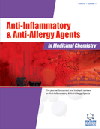
Full text loading...

Angiotensin-(1-7) is a crucial endocrine modulatory peptide that can enhance conditions like diabetes, obesity, and other features of metabolic syndrome. However, there is a lack of data on its long-term effects.
This study aimed to assess the impact of chronic oral administration of Angiotensin-(1-7) on adipose tissue modulation and metabolic processes in mice.
The Angiotensin-(1-7) peptide oral formulation was encapsulated within the hydroxypropyl-β-cyclodextrin oligosaccharide (HPβCD) matrix. Male Swiss mice were divided into 4 groups: standard diet (ST)+HPßCD; ST+Ang-(1-7); high-fat diet HFD+HPßCD, and HFD+Ang-(1-7). The treatment lasted for 12 months, during which body weight, food intake, glycemic and lipid profiles, visceral adiposity, oxidative stress indicators, histological parameters, quantitative real-time PCR assessments, and comprehensive in silico bioinformatics analyses were conducted.
Prolonged treatment with Ang-(1-7) led to improvements in glucose levels, visceral body adiposity, decreased cholesterol and triglyceride levels, and reduced oxidative stress. Bioinformatics analysis revealed that AKT1, an insulin signaling effector (INS), and key inflammatory markers like IL-6 and VEGF may be potential molecular mediators of Angiotensin-(1-7) effects. Non-obese animals treated with Angiotensin-(1-7) showed increased expression levels of AKT1, supporting the findings from the bioinformatics analysis.
This study demonstrates that chronic oral use of Ang-(1-7) enhances adipose and metabolic parameters, suggesting its potential as a long-term therapeutic agent for regulating metabolic disorders.

Article metrics loading...

Full text loading...
References


Data & Media loading...